The latest state and district level results from the National Assessment of Education Progress (NAEP) – sometimes referred to as the Nation’s Report Card – were released on October 24. We already heard the painful reality that we, as a nation, lost 20 years of academic growth in just two short years. The local results, while not unexpected, are alarming.
There were significant drops nationwide, and Nevada saw a similar decline. But it also shows that while kids’ academic progress suffered during the pandemic, Nevada students have been struggling far longer. So what do we do with this information? We use it to understand our baseline, and we look to it to guide us and to focus our next steps to ensure that as a state, we improve outcomes for every single kid.
Why do NAEP results matter?
- It is the most extensive assessment of how American students perform over time on critical skills necessary to compete in the global economy.
- For this most recent test, it is the first comparable national measure of how their performance was impacted during the pandemic.
- It’s a strong indicator of how kids did; now it’s up to us to decide what to do now. It is our responsibility as a community to ensure kids have a fighting chance to make up ground they lost and ensure they graduate ready for college and career – whatever path they choose.
What does this data tell us? More students than before do not have general literacy or numeracy skills. When a kid can’t read at grade level by the end of third grade, they fall further behind because after that point, other subjects rely on reading to learn. This snowball effect is also experienced with eighth grade math; after this point, students are expected to use what they’ve learned for higher level math classes. The impact of these results are long term systemic issues where kids fall further and further behind, with potentially catastrophic results for students, schools, communities, and our future economy.
Our future workforce will depend on kids being able to think critically, perform math and science functions demanded of the 21st century economy, and be able to learn new concepts and applications as quickly as our world is shifting. And with more of our students falling further behind, our state will lag in competitiveness, workforce readiness, and economic livelihood. As an example, a recent estimate from Harvard University placed the US learning loss in math at $900 billion in potential lost earnings.
In fourth grade math, only 28% of Nevada participants were at or above proficient levels, with peers like Texas performing a full 10 points – or about one grade level – higher, and Florida, performing 12 points higher. Clark County School District (the fifth largest school district in the US) fourth graders scored an average of 225 in math, compared with Miami-Dade, FL students (the fourth largest school district in the US) averaging a 241; about 1.5 grade levels above CCSD students.
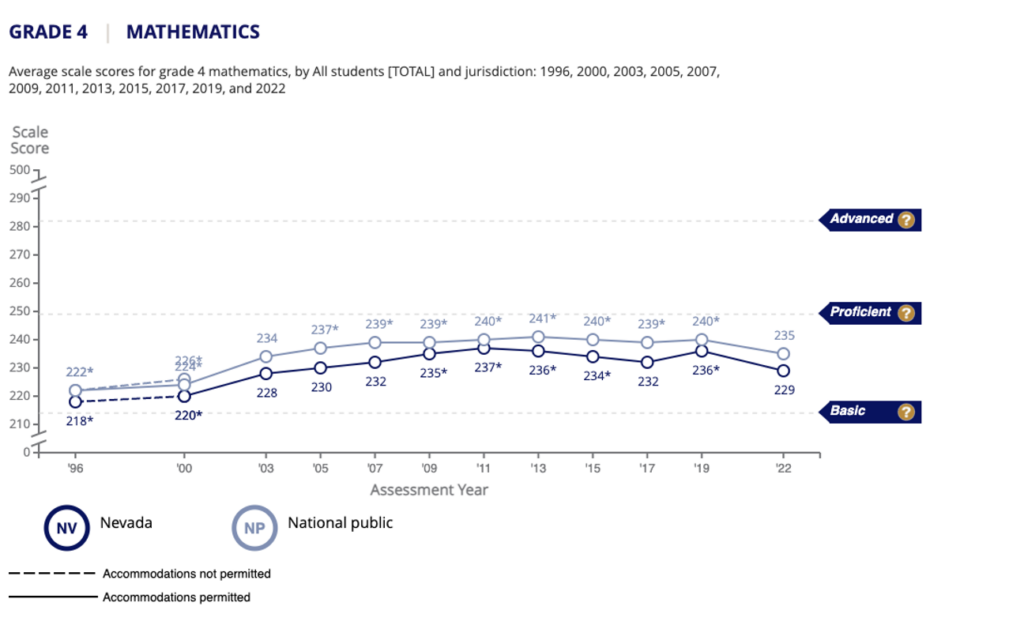
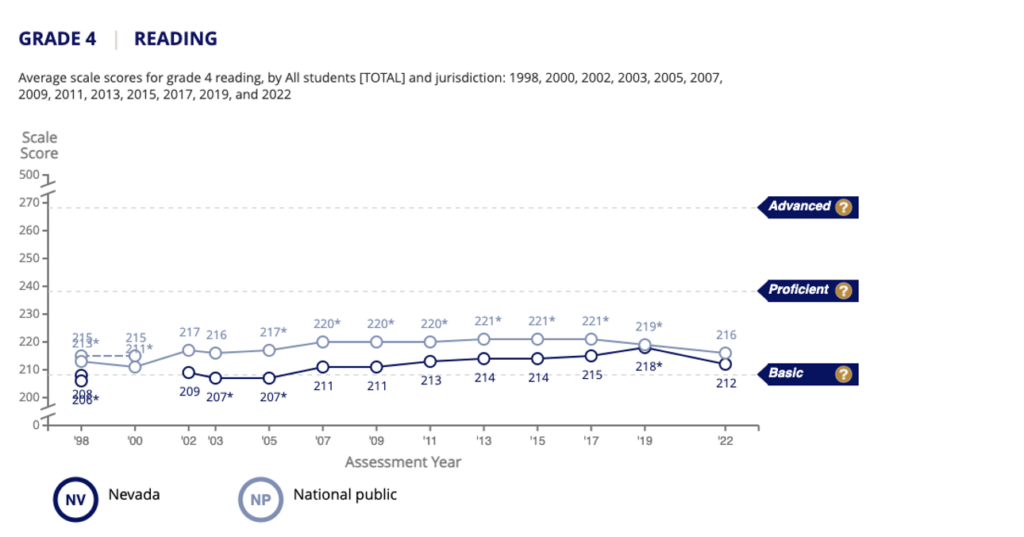
In fourth grade reading, only 27% of participants in Nevada were at or above proficient levels, with Texas performing two points higher, and Florida a full 13 points ahead of Nevada.
Eighth grade scores provide a similar picture. The average Nevada student is just barely above basic proficiency in math, at numbers reflecting a nearly 20-year slide in achievement, but also reminding us that in the history of NAEP, Nevada students have never persistently performed as well as the national average. These are the students who will be transitioning into college and the workforce in just four (4) short years.
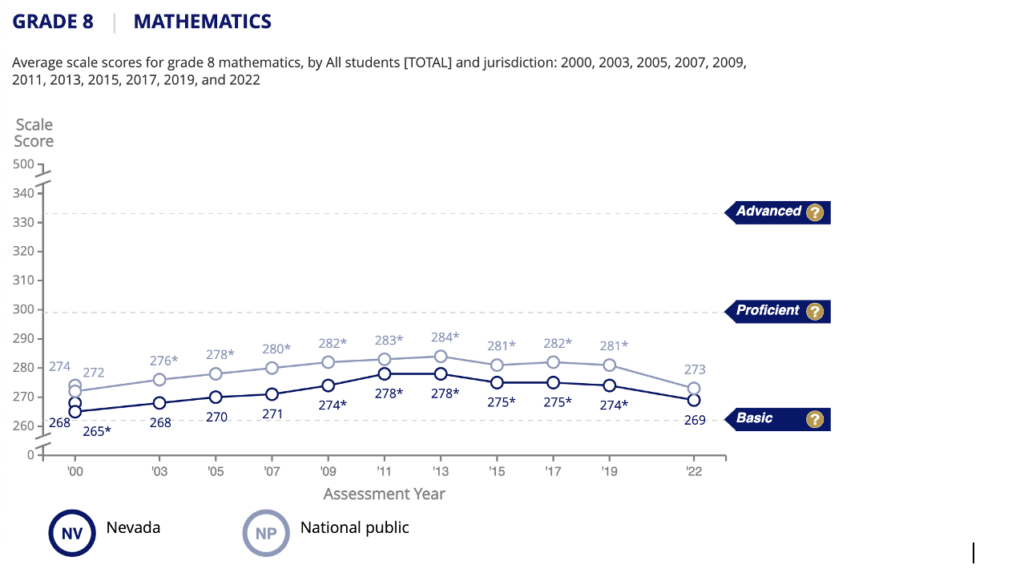
Eighth grade reading scores are about the same as the national average, reflecting a slight increase from 2019, with 29% of students at or above the proficient level. In eighth grade reading, Nevada outperformed Texas by four points, or nearly half a grade level, with Florida just a point ahead of us.
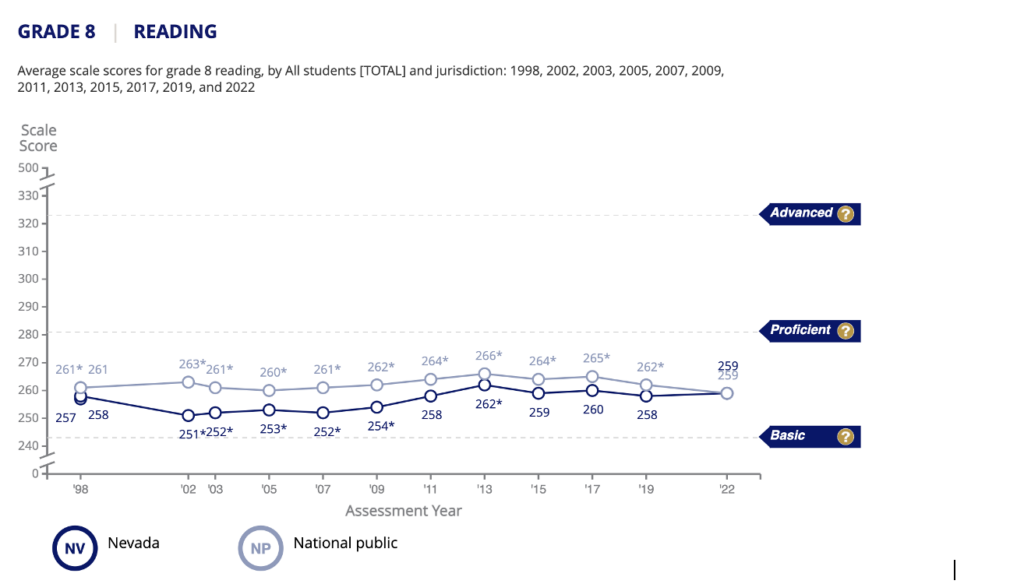
When we explore different student groups, achievement gaps that have long existed have widened. In the most recent administration of the NAEP, Black and Hispanic students performed worse than their White counterparts, and students eligible for free and reduced lunch fared similarly. Clark County School District is one of the most diverse student bodies in the U.S. Efforts locally to prioritize reducing these gaps, however, have not historically had a lasting impact. As we think about interventions to raise student performance, we must include measures that address these gaps on an intentional, widespread basis.
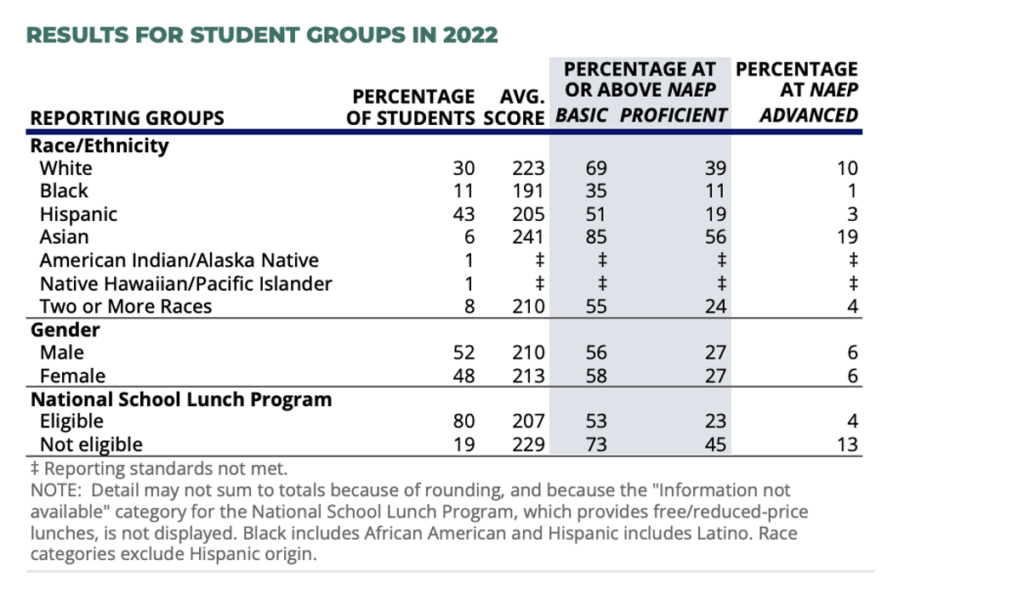
So where do we go from here? We can look to states that improved their NAEP results over time, such as Mississippi, which realized significant gains over the last decade due to a statewide strategy on literacy, higher academic standards, and aligned assessments, among other policies enacted.
We can collectively recognize that this is a pivotal moment for education in our state, and advance a common vision to ensure kids graduate from high school college and career ready, prepared to participate in the workforce and our economy. We can celebrate our wins – like the increase in eighth grade reading scores – and where we are seeing progress, but keep in mind that we have a long way to go.
And we can put every intervention on the table – from tutoring to college and career readiness, to technological infrastructure and more – to make up ground, push forward, and make sure every kid in Nevada has a chance to succeed.
This is not the time for a one size fits all, single strategy approach. This is the time for sweeping change.
Explore the Data
- Explore Nevada’s NAEP data
- Nevada snapshot
- Clark County School District snapshot
- The 74 Million: Advocates & Experts Weigh in on Solutions to Plummeting NAEP Test Scores
Note: All charts and graphs courtesy of the National Center for Education Statistics and the National Assessment of Educational Progress.

